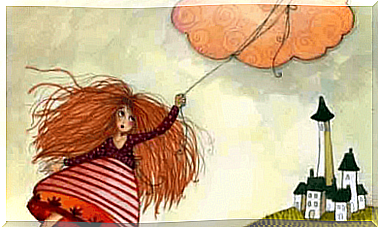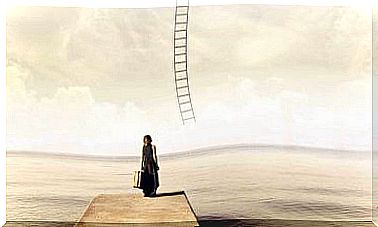Learned Helplessness: The Stone That Leads Us To The Bottom Of The Well

Learned helplessness is a relatively new concept in psychology. However, due to its importance in major epidemics like depression, it is being cited more and more. But what is learned helplessness?
It is a learning process. What does it mean? That a person has no way to defend me. The person who is governed by learned helplessness in a field, or in a global way, understands that he does not have enough tools to be competent in that field.
We may have moved quickly from “defending ourselves” to “being competent,” and it’s not the same thing. In fact, we can understand the ability to defend ourselves as one of the many perceived skills that we may have.
Why did we start with defense? Because this is the context in which learned helplessness has been studied the most. Let’s see what the beginnings of this theory look like.
Overmier and Seligman were the first to hint at part of this concept. Their studies focused on studying the relationship between classical conditioning and aversive instrumental conditioning.
Through their experiments, they realized that dogs were unable to learn a simple avoidance response after a specific condition. This state was none other than the fact of having been subjected to shocks which they could not escape.
Thus, in the first phase of the experiment, they had learned that they had no control over the shocks, and had therefore closed their attention to other elements. Why would they keep trying to escape if they had already learned that they couldn’t?
Jorge Bucay, in one of his most famous stories, also takes up this idea: how past learning conditions our present and future behaviors. Let’s dig deeper.
Learned helplessness
Learned helplessness has the advantage of being relatively easy to inoculate people in ethically acceptable experiences. This allowed us to study it in a controlled context.
Let’s take an example. We know that if we give two groups several lists of letters to form meaningful words, their performance will be very different if one of the groups has already been faced with the same task and, due to its difficulty, could not resolve any of the lists.
In this case, there is no discharge, there is no aversive stimulus, but we still see that a previous experience can negate us in the face of a future challenge that we could face without this prior learning.
Going back to our example, people who spent half an hour trying to find a word in different lists ended up learning that they were faced with a challenge that they could not overcome. They will therefore begin to save resources to invest them in later tasks.
So, in this position of minimal investment of resources, they will not be able to solve even easy-to-find words. In fact, they stay out of the task for a long time, without moving, in a position of helplessness. Just like the dogs who have not escaped the shocks.
On the other hand, we see that we can get a reaction from the group that has given up if we pull them out of this position of helplessness. How? ‘Or’ What ? By telling them, for example, that the difficulty of the exercise has decreased.
We can also tell them that we have found that other groups were also slow to come up with words. So, from this position of helplessness, people will try to regain control.
Against the background of depression
In many cases of depression, a similar phenomenon occurs. Take the example of a depressed person who stopped looking for a job after having found doors closed for months, and who stopped going out with his friends after having accumulated several negative experiences in the social context.
This person stopped performing these tasks, because he saw, he learned, that he could not change the situation. She understood that the result of work and effort is the same as that of stillness and inaction.
This learning damaged his self-image. Realizing that what happens to her is stable, she began to think that her inoperability is related to her own (internal) characteristics. She is not smart, she is not attractive, she has no value.
Then, in addition to not taking steps to change the situation, she started to feel very bad. That is, his self-esteem also started to be damaged.
From that moment on, she also started to lose the natural reinforcements: she didn’t feel ready to do anything anymore. She feels like the weight she is carrying is too heavy and the lights go out. The person feels that there is only one possible way out, to take refuge there.
The problem is, while doing this, she maintains an internal dialogue that only drowns her deeper and deeper into the abyss. So, as we see, learned helplessness in itself is not what brings us down.
But it is the poison that attacks our organs, our mental pillars, causing them to collapse and as a result we sink. It is precisely because of the complexity of the factors at play and the particular way of acting in each person that it is preferable to seek the help of a specialist in case of suspicion of depression.









